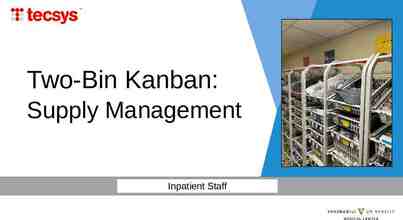Web Application Security By Design Guillermo Munoz, Applications
45 Slides4.68 MB

Web Application Security By Design Guillermo Munoz, Applications Security Engineer

Why “Security by Design” Division of Information Technology

An Overall Picture Use to divide into sections Division of Information Technology

Introduction 1. Cybercrime to reach 6 Trillion by 2021 “This represents the greatest transfer of economic wealth in history, risks the incentives for innovation and investment, and will be more profitable than the global trade of all major illegal drugs combined.” (Morgan, 2017) 2. Average cost of a data breach: 3.86 million (McCarthy, 2018) 3. If not done by design, increased likelihood of vulnerabilities. 4. Beauty, Excellence, Quality Something that is exactly as it should be. We all want our work to be that. Division of Information Technology

Software Application Development Cycle Not meant to be sequential – always iterative Answer questions Do the work Ensure proper working of the app Division of Information Technology

Fundamentals of Web Application Security STRONG AUTHENTICATION STRONG AUTHORIZATION PROTECT ALL DATA VALIDATE ALL INPUT SANITIZE ALL DATA BASIC SECURITY HEADERS Division of Information Technology

The Matrix Analysis Authentication Authorization Protect Data Validate Input Sanitize Data Basic Headers Division of Information Technology Design Implementation Testing Deployment Maintenance

Basic Structure of a Web Application Where does all of this reside? Division of Information Technology

Analysis Division of Information Technology

The Matrix - Analysis Analysis Authentication Authorization Protect Data Validate Input Sanitize Data Basic Headers Division of Information Technology Design Implementation Testing Deployment Maintenance

Analysis (1) 1. Answers “what are we going to do?” 2. Stakeholder involvement Functionality vs. Security Training, Negotiating 3. Fundamental as requirements What is expected in terms of security Do not put into template Division of Information Technology

Design Division of Information Technology

The Matrix - Design Analysis Authentication Authorization Protect Data Validate Input Sanitize Data Basic Headers Division of Information Technology Design Implementation Testing Deployment Maintenance

Design (1) 1. Answers “how are we going to do it?” 2. Environment Personnel – Security Awareness Language, Framework 3. Layout of the Application Defense in Depth Separation of Data Access Layer 4. Use Threat Modeling! 5. Do use a template, or sprint planning checklist Division of Information Technology

Have a security prone mindset Be a bit paranoid. Be open to input, scrutiny. Be a learner. Division of Information Technology

Implementation a.k.a. Defense Against the Dark Arts Division of Information Technology

The Matrix - Implementation Analysis Authentication Authorization Protect Data Validate Input Sanitize Data Basic Headers Division of Information Technology Design Implementation Testing Deployment Maintenance

Build In-Depth Security (1) Check authentication and authorization on every layer on every module Division of Information Technology

Understand and Use Identity Protection in the Page Life Cycle (1) public class MyBasePage : System.Web.UI.Page { protected override void OnInit(EventArgs e) { base.OnInit(e); ViewStateUserKey Session.SessionID; Image Source Division of Information Technology }

Understand and Use Identity Protection in the Page Life Cycle (2) Set ViewStateUserKey to SessionId Use additional user token. Use Base Page methods to check credentials – Authentication and Authorization. Division of Information Technology

Build In-Depth Security (2) Base Page Class public class MyBasePage : System.Web.UI.Page { public void PageIsAdminOnly() { if (! CurrentUser.role.isAdmin) { Server.Transfer(" /NoPageAccess"); } } Division of Information Technology On Each Page’s Code – Assert Security public partial class Users : MyBasePage { protected void Page Load(object sender, EventArgs e) { PageIsAdminOnly();

Protect User Credentials “The best password is one you don’t have to st ore”. Enforce strong password requirements Store password securely Use generic “invalid login” message Limit login attempts – use timeout Division of Information Technology

Protect Data Exercise Least Privilege Encrypt all sensitive information. Remove content rather than hiding it. Use generic error page – no details. Division of Information Technology

Require Secure Transport (1) Set your Web Server to Require Secure Transport IIS Manager Features View SSL Setting Require SSL Division of Information Technology

Require Secure Transport (2) Web.config transforms – add permanent redirect system.webServer xdt:Transform "Insert" rewrite rules rule name "HTTP to HTTPS redirect" stopProcessing "true" match url "(.*)" / conditions add input "{HTTPS}" pattern "off" / /conditions action type "Redirect" url "https://{HTTP HOST}/{R:1}" redirectType "Permanent" / /rule /rules /rewrite /system.webServer Division of Information Technology

Validate All Input (1) According to OWASP: “The most common web application security weakness is the failure to properly validate input from the client or environment.” Division of Information Technology

Validate All Input (2) Use Your Platform’s Request Validation: void Application Error(object sender, EventArgs e) { Exception exc Server.GetLastError(); if (exc is HttpRequestValidationException) { Server.Transfer("ErrorPage.aspx?handler ReqVal"); } else if (exc is HttpUnhandledException) { Server.Transfer("ErrorPage.aspx?handler AppErr", true); } } Division of Information Technology

Sanitize all data, on input and output Know and use input / output sanitization functions provided by PHP. For example: filter input, filter var htmlspecialchars() htmlentities() strip tags() urlencode() json encode() mysqli real escape string() addslashes() Division of Information Technology

Sanitize all data – Script and SQL Injection (1) An example of what not to do: SelCmd “SELECT id, name FROM building WHERE city id “ CityId; SELECT id, name FROM city Division of Information Technology BldgList GetBuildings (CityList.SelectedValue)

Sanitize all data – Script and SQL Injection (2) What to do in your data access layer 1. Service or API with type-safe parameters [OperationContract] List Building GetBuildings(Int64 cityId); 2. Parameterize your query SelCmdTxt “SELECT id, name FROM building WHERE city id @CityId” SelCmd new MySqlCommand(SelCmdTxt, conn); SelCmd.AddParameter(“@CityId”, cityId) Division of Information Technology

Basic Headers Web.config system.webServer httpProtocol customHeaders add name "X-FrameOptions" value "DENY" / /customHeaders /httpProtocol Global.asax protected void Application BeginRequest(obje ct sender, EventArgs e) { HttpContext.Current.Response. AddHeader("x-frame-options", "DENY"); } Division of Information Technology

Testing Division of Information Technology

The Matrix - Testing Analysis Authentication Authorization Protect Data Validate Input Sanitize Data Basic Headers Division of Information Technology Design Implementation Testing Deployment Maintenance

Testing (1) Define scope of testing Make use of OWASP testing checklist. Use Use best tools Vulnerability scanner Pen testing tools (Zap, Burp, Metasploit, etc) Possible automated source code analysis Division of Information Technology

Testing (2) Scan for vulnerabilities do a credentialed scan, with a web server and web app savvy profile/policy Potential for multiple scans with multiple tools – ZAP, Burp Suite. Manual testing Verify results of the scan Do additional penetration testing – Owasp Top 10 in mind Document all findings Start with summary of strengths Summarize and document score of the vulnerabilities Process remediation Division of Information Technology

Deployment Division of Information Technology

The Matrix - Deployment Analysis Authentication Authorization Protect Data Validate Input Sanitize Data Basic Headers Division of Information Technology Design Implementation Testing Deployment Maintenance

Deployment (1) Separate TEST and PRODUCTION servers Do not deploy test accounts to production servers Have a security audit of the Web application before deployment Not done by anyone involved in development Scan with vulnerability scanner application (ex: Nexpose) Manual penetration testing Code review Division of Information Technology

Deployment - WAF filtered http responses http requests Web Application Firewall filtered http responses Division of Information Technology Web Server http requests

Deployment (2) Web Server hardening Configuration hardening Monitoring and auditing Regular patching Division of Information Technology

Maintenance Division of Information Technology

The Matrix - Maintenance Analysis Authentication Authorization Protect Data Validate Input Sanitize Data Basic Headers Division of Information Technology Design Implementation Testing Deployment Maintenance

Maintenance (1) Iterate the software development lifecycle On user maintenance requests On regular basis Regular scans and demand remediation Regular review of software Code Algorithms used Division of Information Technology

Q&A and Discussion Division of Information Technology

References Attwood, J. (2015, April 23). Your Password is Too Damn Short. Retrieved from Coding Horror: https://blog.codinghorror.com/your-password-is-too-damn-short/ Beaver, K. (2019). 5-Step Checklist for Web Application Security Testing. Retrieved May 2019, from SearchSecurity.TechTarget: https://searchsecurity.techtarget.com/tip/5-step-checklist-for-web-applicationsecurity-testing Kubenka, K., & Munoz, G. (2019). Assessing You Web Server and Application's Security. Tech Summit 2019. Galveston. McCarthy, N. (2018, July 13). The Average Cost Of A Data Breach Is Highest In The U.S. Retrieved May 9, 2019, from Forbes: https://www.forbes.com/sites/niallmccarthy/2018/07/13/the-average-cost-of-a-databreach-is-highest-in-the-u-s-infographic/#3efad0882f37 Microsoft Security Development Lifecycle Resources. (2019). Resource List. Retrieved March 2019, from Microsoft - Security Engineering - Security Development Lifecycle: https://www.microsoft.com/en-us/securityengineering/sdl/resources Morgan, S. (2017, October 16). Cybercrime Damages 6 Trillion By 2021. Retrieved May 9, 2019, from Cybersecurity Ventures: https://cybersecurityventures.com/hackerpocalypse-cybercrime-report-2016/ Munoz, G., & Tarpley, J. (2017). Addressing Web Application Security. Tech Summit 2017. Galveston. OWASP. (2018, December 28). Clickjacking Defense Cheat Sheet. Retrieved from Github: https://github.com/OWASP/CheatSheetSeries/blob/master/cheatsheets/Clickjacking Defense Cheat Sheet.md OWASP. (2019). Application Threat Modeling. Retrieved April 2019, from Open Web Application Security Project: https://www.owasp.org/index.php/Application Threat Modeling OWASP. (2019). Data Validation. Retrieved May 2019, from Open Web Application Security Project: https://www.owasp.org/index.php/Data Validation OWASP. (2019, March 31). SQL Injection Prevention Cheat Sheet. Retrieved from Github: https://github.com/OWASP/CheatSheetSeries/blob/master/cheatsheets/SQL Injection Prevention Cheat Sheet.md OWASP. (2019). Testing Guide. Retrieved Mar 2019, from Open Web Application Security Project: https://www.owasp.org/index.php/OWASP Testing Guide v4 Table of Contents Romeo, C. (2018, January 23). Secure Development Lifecycle: The essential guide to safe software pipelines. Retrieved from TechBeacon: https://techbeacon.com/security/secure-development-lifecycle-essentialguide-safe-software-pipelines Sucuri. (2018). Website Hack Trend Report 2018. Retrieved May 9, 2019, from Sucuri: https://sucuri.net/reports/2018-hacked-website-report/ Division of Information Technology






